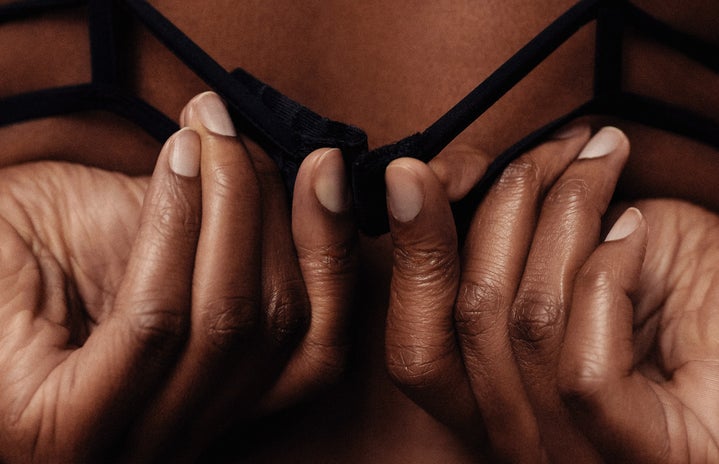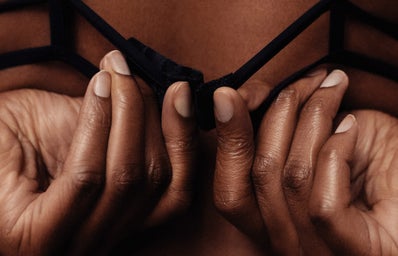With big-name actresses like Keira Knightley and Lily James claiming that wearing a corset is actual torture, it’s hard not to believe that corsets aren’t fun. In fact, many actresses speak about their loathing for corsets. And yet, none of these complaints hold a candle to Emma Watson’s resolute refusal to wear a corset for her role as Belle from Beauty and the Beast. All because she wanted Belle to have all the agency of a modern-day woman instead of being reduced to an “impossible idea of female beauty”.
Who wants to tell these ladies that corsets were a common undergarment by the eighteenth century and late nineteenth century? That they were, when correctly fitted, designed to protect the back by forcing lifting to be done with the legs. Or that corsets did not impede the ability for a woman to work nor breathe. Or perhaps, my favourite of all, that corsets were actually comfortable.
Imagine a common undergarment offering some practicality. It’s almost as if corsets were not designed to oppress women, but instead do their job of supporting the breasts.
Heavy sarcasm aside, corsets were worn by all classes of women.
The only time corsets were uncomfortable were when they were tight-laced, which is when you pull the corset so tight it drastically shrinks your waist. Tightlacing was not a common practice for those in the working class, as it had more to do with vanity.
But let us entertain the idea that corsets were instruments of torture designed to limit a woman’s agency and reduce her to a mere “idea of female beauty.” Yes, a garment created and popularized by women was definitely intended to limit women.
If that was the case, please explain to me why it was a commonly worn undergarment even within the working class. Please, tell me exactly why something meant for fashion would be commonly homemade by even the poorest of families as an essential undergarment for women.
Tell me exactly why women would subject themselves to a thing of vanity and constriction when many could not afford the latest fashions.
If one were to do adequate research and not base opinions on the latest article from a tabloid explaining another actress’ poor experience with the horrendous torture device that is a corset, perhaps one would realize that their bias and society’s bias against anything remotely feminine impedes them from historical accuracy.
To be less formal, I’m telling people to consult books written by historians regarding the issue. Preferably those written by a female. With that, it is also important to mention that I cannot possibly cover the controversy surrounding corsets and their history. I can simply explain that the claim that all corsets are bad is quite frankly ignorant.
So, why do I care so much about why so many actresses despise corsets?
I have worn a corset multiple times during various activities including daily tasks and exercise. I have worn a corset for numerous hours while having done so properly.
However, I can understand why some of the most well-known actresses hate corsets. They are likely ill-fitted, not customized to their form, not properly broken in or they are tight-laced.
Besides, nowadays, historical accuracy is evidently not the goal of costumes on the big screen. There are plenty of people who make videos breaking it all down, and many of which are women with knowledge of historical fashion. When the goal of an outfit is to portray the stereotypical fashion of a certain period, while also modernizing it, comfort is not the main goal.
This brings me to the point of my article.
If corsetry isn’t oppressive, why is it misogynistic to believe it is?
To explain that, let’s talk about the Dress Reformers and feminism.
The Dress Reformers were a group of middle-class ladies who were essentially part of the first wave of feminism. They fought for women’s rights to education, suffrage and more. All in all, they stood for a great cause. They wanted women to be able to adopt more simplistic clothing and become detached from the vanity of fashion that men held against women who sought for their rights. It was a valiant cause that held many similarities to modern-day feminism. Examples include doing things to make men take women more seriously, like wearing clothing for practicality, instead of wearing it because it makes you feel confident.
By no means am I implying that you shouldn’t dress for practicality. I’m simply saying that women looking down on other women for what they choose to wear is no better than the men doing the same. I’m saying that people forget that working towards equality does not mean attacking your allies because they go against your beliefs of what a feminist is.
Corsetry isn’t oppressive, but the people telling history sure as hell are, and believing them without knowing all the facts perpetuates the misogyny we see today.
Learn the facts, develop your opinion and question everything you’re told. Even this.
Oh, and one last thing, while corsets rearrange your organs, so does pregnancy.



